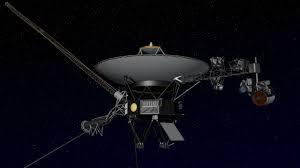Exploration
Nine spacecrafts have studied jupiter up close. NASA'S Juno spacecraft is currently studying the gas giant planet from orbit
The spacecraft, which arrived at Jupiter in July 2016, is the first to study the planet's mysterious, cloud-shrouded interior. Scientists also use the Earth-orbiting Hubble Space Telescope and ground-based telescopes to regularly check in on Jupiter.
Pioneer 10 was the first spacecraft to fly past Jupiter. It was followed by Pioneer 11, Voyager 1 and Voyager 2 flybys. NASA's Galileo mission was first to orbit Jupiter and to send an atmospheric probe into the stormy clouds. The international Ulysses mission used Jupiter's powerful gravity to hurl itself into orbital passes of the Sun's northern and southern poles. Both Cassini and New horizons studied Jupiter as they hurtled on to their main science targets — Saturn for Cassini and Pluto and the Kuiper Belt for New Horizons.
Two new missions are in the works to make close studies of Jupiter's moons NASA's Europa clipper and ESA's Jupiter Icy Moon Explorer (JUICE).
Jupiter holds a unique place in the history of space exploration. In 1610, astronomer Galileo Galilei used a new invention called the telescope to look at Jupiter and discovered the first moons known to exist beyond Earth. The discovery ended incorrect, ancient belief that everything, including the Sun and other planets, orbited the Earth.
37
86 reads
CURATED FROM
IDEAS CURATED BY
I'm passionate about helping people live their best lives. I'm a lifestyle coach & burnout coach.
The idea is part of this collection:
Learn more about scienceandnature with this collection
How to practice effectively
The importance of consistency
How to immerse yourself in the language
Related collections
Similar ideas to Exploration
Asteroid exploration timeline
- 1991 - NASA's Galileo was able to take close-up images of asteroids
- 1994 - Discovered the first moon to orbit an asteroid
- 2001 - Landed a spacecrafts successfully on Near-Earth Asteroid Eros
- 2006
Voyager
Voyager 1 and Voyager 2 probes followed after the Pioneers.
- They made many important discoveries about Jupiter and Saturn.
- Discoveries include rings around Jupiter and volcanism on Jupiter's moon.
- Voyager made the first flybys of Uranus, where it discovered ten new ...
Pioneer
Pioneer 10 and Pioneer 11 were launched in 1972 and 1973. They were the first spacecraft to visit Jupiter and Saturn in a one-way voyage.
- Pioneer 10 traveled through the solar system's asteroid belt between Mars and Jupiter.
- A year-and-a-half after it's laun...
Read & Learn
20x Faster
without
deepstash
with
deepstash
with
deepstash
Personalized microlearning
—
100+ Learning Journeys
—
Access to 200,000+ ideas
—
Access to the mobile app
—
Unlimited idea saving
—
—
Unlimited history
—
—
Unlimited listening to ideas
—
—
Downloading & offline access
—
—
Supercharge your mind with one idea per day
Enter your email and spend 1 minute every day to learn something new.
I agree to receive email updates


